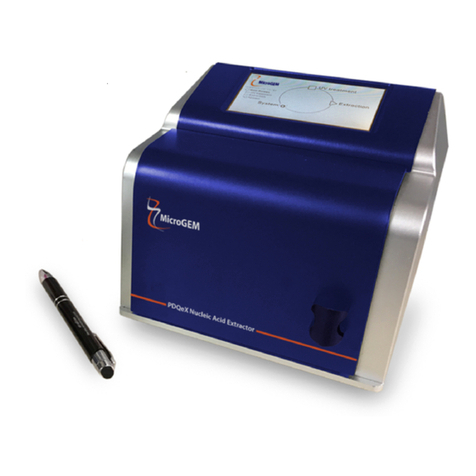
Introduction to the PDQeX
PDQeX Nucleic Acid Extractor
The simplicity and minimal sample manipulation requirement of the PDQeX make it an
attractive option for obtaining DNA samples.
Jo-Ann Stanton, PhD
Department of Anatomy, University of Otago
New Zealand
Perfect for a wide range of sample types including:
Forensic evidence and human ID
Voltage (24 V DC adapter included)
Programmable thermal range
24 samples, standard 96 well spacing
24 PDQeX cartridges (200 μL)
100-240 VAC, 2A, 50/60 Hz
Pre-installed and user programmable
22 x 18 x 18.5 cm (L x W x H) (8.5" x 7" x 7.25")
PDQeX Extraction Reagents consist of a cocktail of
thermophilicproteinaseandmesophiliccellwalldegrading
enzymes that systematically lyse cells, destroy nucleases,
digest proteins, and release nucleic acids. Each reagent kit
is specially formulated for specific sample types.
PDQeX Extractor Cartridges, made from thermo-
responsive polymers, pump extracted DNA through the
purification matrix while removing cell debris and
inhibitors.
MicroGEM's PDQeX Nucleic Acid Extractor brings together
powerful enzymes with an innovative extractor cartridge and
purification matrix. The temperature-driven single-tube system
produces extracts in significantly less time (minutes, not hours)
than other extraction methods.




























